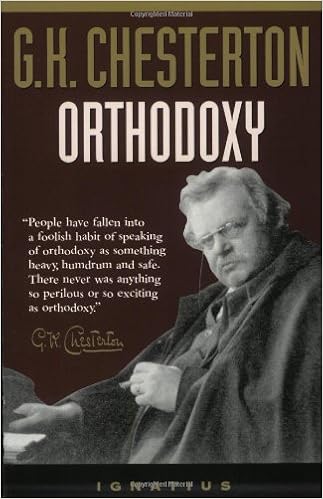
Posted on 01/17/2020 7:05:07 AM PST by SeekAndFind

A house in England where famed Christian thinker and writer G.K. Chesterton used to live could be demolished and replaced with apartments if it's not saved.
Octagon Developments, Ltd recently applied for permission to demolish the Beaconsfield, Buckinghamshire home, known as Overroads. A decision about the property's future is expected later this month.
The Beaconsfield Society, the residents’ society formed in the 1960s with the goal of preserving the area’s past, told The Christian Post that "two applications have been submitted to the council" requesting permission to build on the site.
"The first is for permission to build nine apartments,” the society said in an email to CP. “The second application is for approval to demolish the existing building or confirmation that the developer can go ahead and demolish without the requirement for prior approval to demolish.”
The society said they oppose the demolition, explaining to CP that they “would like to see the home preserved because it is of heritage importance.”
Dale Ahlquist, president of the United States-based Society of Gilbert Keith Chesterton and The Chesterton Schools Network, is also opposed to the demolition, with his organization actively campaigning to stop it.
In an interview with CP, Ahlquist said the “demolition of Chesterton’s home would be a tragedy for England’s cultural heritage” and “an insult to Chesterton’s devotees around the world.”
“We have helped organize a letter-writing campaign to the commissioners who will be making the decision on the proposed re-development of the property,” he said.
“Letters opposing the destruction of Overroads have come from authors, scholars, politicians, and religious figures.”
Born in London in 1874, Chesterton was a prolific writer, having written hundreds of poems, approximately 200 short stories, more than 4,000 news articles, and around 100 books.
One of Chesterton’s books, titled The Everlasting Man, was believed to have helped inspire a young C.S. Lewis to convert to Christianity.
“I can see the fingerprints of Chesterton all over Lewis’s books,” wrote Trevin Wax, visiting professor at Wheaton College, in a 2016 essay for The Gospel Coalition. “Like Lewis, I have fallen for Chesterton.”
“I love how he crossed the lines of literature and gave us poems, essays, plays, detective stories, novels, and apologetic works. No one but Chesterton serves up so many insights that stretch and spin my mind.”
Chesterton and his wife moved into Overroads in 1909 and lived there until 1922, when the family moved to the nearby home known as Top Meadow, where he lived until his death in 1936.

Be it ever so humble, I guess.
I’ve been watching “Father Brown” detective shows on Netflix. They’re based on Chesterton. The Catholicism is very strongly expressed. Pretty well done and I recommend it. Soothing and old-fashioned.
I guess Chesterton is how you say Kelo in British English. (That minority dialect)
Diversity means Density & Misery.
Where One person lived, pack in 9 families into the ghetto of misery.
This is "Overroads":

Given the dismal weather in England, I used to think Brits had all their time occupied by boring jobs and drinking at the pubs. But these photos remind me they had much shrubbery to tend. Boring jobs, pubs, and shrubbery tending...
Ni!
The tragedy for England's cultural heritage is that most English people under 70 wouldn't recognize Chesterton if he sat on them.
If Chesterton's fans around the world are so crazy about his house, they should raise enough money to outbid the developer and purchase it. Perhaps the local historic-preservation society, which has an immediate interest in the location, would also contribute and help with the paperwork.
Sadly If they are applying to build a mosque on the site it will probably be torn down. Today’s England.
Disclaimer: Opinions posted on Free Republic are those of the individual posters and do not necessarily represent the opinion of Free Republic or its management. All materials posted herein are protected by copyright law and the exemption for fair use of copyrighted works.